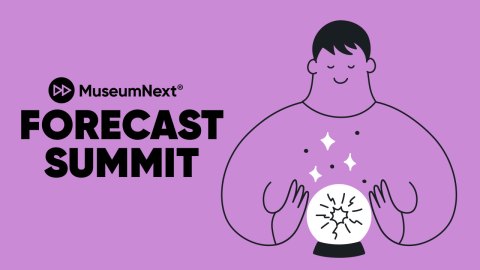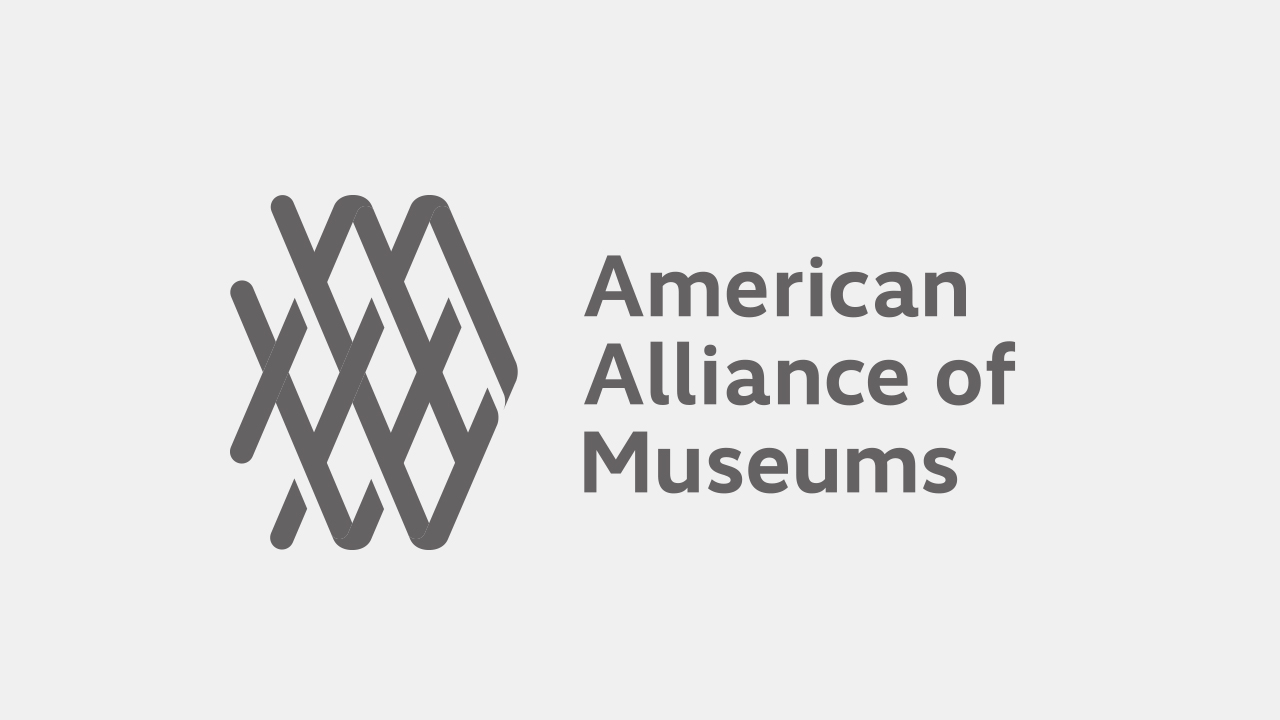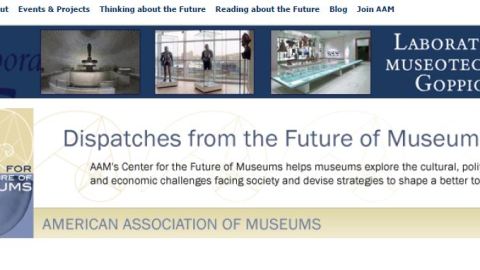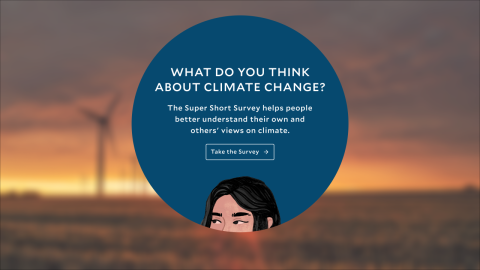
This article first appeared in the journal Exhibition (Spring 2025) Vol. 44 No. 1 and is reproduced with permission.
What do we mean by “ethics”? We think we agree on what ethical behavior is, but do we really? How can we continue to forge ethical relationships that acknowledge our institutional histories while moving us forward into a more equitable future, especially as we find ourselves in a moment of intense polarization and division?
In this issue, editor Jeanne Normand Goswami asks Dr. Janet Marstine, a leading scholar of museum ethics, to help illuminate the present and future of ethical exhibition-making.
Q: Janet, thank you so much for talking with me. I want to start with a big question. One of my favorite TV shows of the past few decades was The Good Place. In one episode, it is revealed that no one has gotten into the good place in centuries because the nature of our societies and economies have essentially made it impossible to be a “good” person—every action has a potential negative side effect on the environment or others that negates whatever the original intention of the action was. It’s a funny and thought-provoking concept for a TV show, but it does make me wonder: Do you think museums are, or are capable of being, ethical? Or is there just too much baggage there—from their roots in colonial systems and worldviews to their past and current funding sources, etc.?
A: I characterize being ethical as a dynamic process of becoming, rather than a fixed state. Behind this thinking is the notion of ethics as a continuous journey through complex and often messy deliberation in which the questions are always evolving as the political, social, technological, and economic context shifts. All museums have baggage; but being ethical means that the institution is committed to transparency and self-reflection concerning its historical and contemporary wrongs and to systemic transformation that addresses these wrongs in collaboration with publics demanding change, particularly the communities that the institution has hurt.
Embracing values-based, inclusive decision-making over risk-aversion is foundational. And robust ethical deliberation is required across all areas of museum work, from curation and exhibition-making to development, conservation, human resources, and audience engagement. Despite significant challenges, the majority of American museums are immersed in the dynamic process of being ethical. The current U.S. political climate of sectarianism and backsliding on such vital ethical issues as human and civil rights, DEAI, and climate change presents profound difficulties for museums. But I am optimistic that, despite increasing pressures from government and other funders and particular audiences, museum practitioners will continue to develop strategic pathways to ethical thinking and action, even if some of this work takes place under the radar.
Q: Museum ethics is such a huge topic. You have said that you wish to move away from understanding ethics as a rigid code of behavior to re-envision it as “both a discourse and a practice.” Can you say more about what you mean by this?
A: For too long, ethics was defined in the museum sector through the prism of conventional ethics codes: static, rigid documents that established prohibited behaviors with language stressing compliance. This traditional notion of ethics is problematic in its passive “do no harm” approach and policing sensibility. It encouraged practitioners to see ethics as something to be feared and to seek out ethics codes only as a reactionary measure at times of crisis. It also suggested that the code itself would provide a simple answer and that there was no need to actively engage with the document.
Over the last 15 years, however, novel concepts of museum ethics have emerged that are aspirational rather than compliance-based and driven by principles and values aligned with recommended practices. Innovative models of ethics codes have developed, in turn, that call for deep, proactive, and collaborative ethical deliberation and decision-making. For example, the UK Museums Association Code of Ethics states in its introduction:
Ethical reflection is an essential part of everyday museum practice. This code cannot contain all the answers to the ethical issues that museums face. . . . In all cases, practitioners should conduct a process of careful reflection, reasoning, and consultation with others.[1]
Museum ethics is gradually becoming as robust an arena of discourse and action as business ethics, digital ethics, medical ethics, and environmental ethics. Given the current political moment in America, museums will need to enhance and rely upon this growing expertise as their ethics are challenged as never before.
Q: How do you see this extending to exhibition-making specifically? What guides ethical exhibition-making in the current moment?
A: As the papers in this issue attest, exhibition-making prompts a myriad of ethical questions that necessitate robust deliberative decision-making. Practitioners have a wealth of guidance to support them but will need to be creative to locate the most relevant resources for their exhibition work. They may find it useful to examine guidance in three intersecting areas—curating, programming, and collections management—to find what they’re seeking.
It is critical to know well the ethics code of your national governing body,[2] as well as pertinent internal museum documents, such as institutional ethics codes and collections management policies, which typically contain guidance on incoming loans, use of collections, and collections-related ethical issues. But it can also be fruitful to look further afield to international resources, for instance, the new ICOM code (now in draft form but being finalized later in 2025)[3] or to the expansive 2023 Museums Australia guidance, which frames ethics not through a code per se but through a structure of (ethical) principles, standards, benchmarks, tips, and resources.[4] Further, it will be crucial to consider the ethics of particular communities with whom you are collaborating, for example, Indigenous ethics.
Standards are typically shaped by ethical principles and so knowing the AAM Standards for Education and Interpretation is essential.[5] Exhibition practitioners may want to consult guidance on topical issues from sources such as the UK Museums Association’s “Supporting Decolonisation in Museums”[6] or AAM’s Center for the Future of Museums.[7] In addition, guidelines from advocacy groups, for instance the National Coalition Against Censorship’s “Museum Best Practices for Managing Controversy,” can help in many contexts.[8]
But, of course, when and how to use such guidance is equally as important as what we use. The when is easy: the earliest planning stages—so that concepts and actions from relevant guidance can be integrated holistically into the project. The how is harder, as guidelines from diverse sources sometimes contradict one another, making it difficult to identify where our ethical responsibility sits. Consulting literature on museum ethics and engaging in ethics-related professional development can be invaluable, as can examining case studies, which are frequently embedded in or linked to ethics guidance. Moreover, it is fundamental to collaborate with colleagues internally—and also externally, whenever possible—to work through the ethical challenges presented by exhibitions so that, together, we can advance ethics expertise in these divisive times.
Q: Can you share an example of a quandary or dilemma you’ve encountered in your time working in and with museums and how you approached it to reach an ethical outcome?
A: As a consultant, I supported the National September 11 Memorial & Museum (NS11MM) to work through the ethics of if and how to exhibit emotionally wrought artifacts representing traumatic experiences—in the fraught context that some of these objects might potentially contain traces of human remains. I identify the museum, with permission, to illustrate the principle that sharing our experiences in ethical deliberation, rather than secreting them, benefits the wider museum community and our publics.
For this project, I convened a small group of practitioners and scholars with ethics expertise to take part in a series of discussions with museum leadership. Senior leadership thoughtfully laid out the issues, sharing key histories, documents, and results of stakeholder consultations and focus groups. Over a year of conversations, we built trusting relationships with NS11MM staff. In the deliberative process, questions were posed, relevant guidance and models considered, guidelines established, and an array of solutions analyzed. A principle agreed upon unanimously early in the process was that the museum would not intentionally collect or exhibit human remains and that this would be stated clearly in its collections policy. It was essential to articulate and follow this principle both for ethical reasons and to distinguish between the museum and the repository of unidentified/unclaimed human remains, which is located at the same site, but set behind a dividing wall and controlled and managed by the Office of Chief Medical Examiner of New York, to which there is no public access.
One subject of our ethics conversations was whether and how the museum might display what it calls the Composite, a monumental accretion composed of multiple burned and collapsed floors of one of the towers compressed into a solid mass. While test results of the Composite’s surfaces revealed no evidence of human remains, there was concern that people may have been crushed within it. However, this section of the Twin Towers burned at over 2,000 degrees Fahrenheit, beyond the temperature of human cremation. Participants in focus groups convened by the museum strongly agreed that it was essential to display the Composite, asserting that, though the Composite would be emotionally distressing to view, particularly for family members of the victims (some of whom participated in the focus groups), it captures the overwhelming destruction of the attack in a unique and powerful manner.
With support from our ethics group, the museum chose to exhibit the Composite with sensitivity and care. Authenticity is essential to the museum’s narrative, and it was determined that the Composite would attest to the authenticity of the collapse of the Towers in a way that no other artifact could. The museum created a reverential and contained space for the Composite, setting it apart from the main traffic path of the exhibition to encourage private contemplation. This alcove design feature, also employed elsewhere in the museum to signal highly emotive materials, empowers visitors to make informed decisions about whether or not to view such displays. The museum considered introducing a mechanism by the Composite for visitors to share their reflections but ultimately decided that this would detract from the solemn aura of the display and opted instead to situate an electronic monitor inviting visitors to record their thoughts at the end of the permanent exhibition.
Q: From your perspective, what is the biggest ethical issue facing museum exhibition practitioners working today? Do you have any suggestions for how they might approach such topics while keeping ethics front and center in their practice?
A: One topical ethical issue concerns freedom of expression and the pressures of self-censorship. Curatorial self-censorship is the act of suppressing ideas and/or artistic expression during the processes of curating and exhibition-making, sometimes upon the directive of museum leadership. Self-censorship is prompted by real or anticipated threats of censorship from funders and/or the state or by fears of offending publics. Exhibition practitioners and cultural institutions face pressures to self-censor from all sides of the political spectrum. Developing the ingenuity to negotiate these pressures is of particular urgency today.
It is critical for practitioners to learn to recognize when, how, and through what channels they are experiencing the pressures to self-censor. Sometimes these pressures are exerted directly and clearly, but often they manifest in indirect and murky ways that can be hard to identify. One of the biggest challenges is distinguishing between self-censorship and what may simply be responsible curatorial selection.
It is equally essential to develop effective tools to negotiate through deliberative ethical decision-making the pressures of self-censorship. To do so, we must reject the long-assumed binary opposition between unfettered freedom of expression and absolute censorship. Total freedom of expression can be destructive. We need to learn from the shifting views of our publics; and in some cases, (for example, when that expression risks harm or endangerment to others), a degree of self-censorship is an ethical imperative. Simultaneously, the pressures to self-censor do not require us to abandon our agency but, instead, ask that we develop strategies and tactics to negotiate those pressures. Sometimes a degree of self-censorship is inevitable in maintaining the integrity of exhibition-making, and small steps can be more productive than radical gestures. Navigating the pressures of self-censorship is a skill to be nurtured and honed.
Conducting front-end evaluation can help exhibition practitioners anticipate potential controversies and create a framework for ethical decision-making. Practitioners may also find it beneficial to identify under-the-radar spaces (such as a less prominent gallery), to avoid particularly fraught moments (for example, a presidential inauguration or commemorative event), and to deploy language strategically.
They may need to consider how to:
- Balance the pursuit of one’s own vision with respect for diverse social, cultural, and geographic contexts
- Communicate productively through the media without fomenting conflict
- Weigh the need to defend their curatorial/exhibition-making values against the risks of employment termination (for themselves and/or collaborators) and even their institution’s survival.
The complexities of negotiating the pressures of self-censorship enjoin us to forge alliances with colleagues and publics that foster mutual support and joint advocacy.
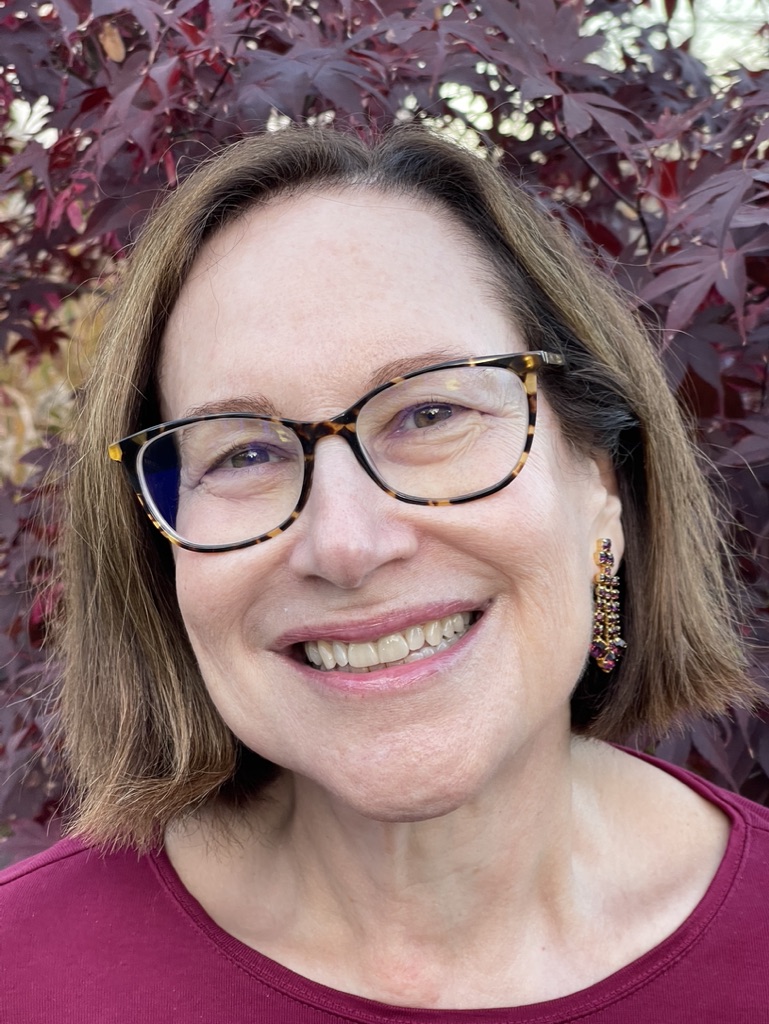
Over more than 20 years, through her research, writing, and teaching, Dr. Janet Marstine has reinvigorated and redefined the field of museum ethics globally. Through her work as Assistant Professor of Museum Studies/Founding Director of the Institute of Museum Ethics at Seton Hall University in South Orange, New Jersey (2005–10), subsequently as Assistant and Associate Professor in the School of Museum Studies at the University of Leicester, UK (2010–2019), and now as an independent scholar and consultant, Marstine has established a robust research trajectory analyzing ethics topics from museum transparency to curatorial self-censorship to artists’ interventions as drivers for ethical change. To support this research, conducted internationally, in the United States, United Kingdom, Europe, mainland China, and Hong Kong, she has received grants from the Institute for Museum and Library Services, the Arts and Humanities Research Council (UK), and the British Academy. In 2018, Marstine was a Senior Research Fellow at Fudan University in Shanghai. She served on the Ethics Committee of the UK Museums Association for five years and has been first supervisor to 14 PhD students, many of whom have developed innovative museum ethics research of their own.
Jeanne Normand Goswami is the editor of Exhibition.
[1] “Code of Ethics for Museums,” Museums Association, accessed February 5, 2025, https://www.museumsassociation.org/campaigns/ethics/code-of-ethics/.
[2] In the United States, this is the “AAM Code of Ethics for Museums,” adopted in 1993 and amended in 2000, Ethics, Standards, and Professional Practices, American Alliance of Museums, accessed February 5, 2025, https://www.aam-us.org/programs/ethics-standards-and-professional-practices/code-of-ethics-for-museums/.
[3] “Revised ICOM Code of Ethics: First Draft,” ICOM, accessed February 5, 2025, https://icom.is/wp-content/uploads/2024/09/Revised-ICOM-Code-of-Ethics-First-Draft.pdf.
[4] “National Standards for Australian Museums and Galleries,” second edition, 2023, accessed February 5, 2025, https://mgnsw.org.au/wp-content/uploads/2023/03/Nationals-Standards-for-Australian-Museums-and-Galleries-2.0.pdf.
[5] “Education and Interpretation Standards,” Ethics, Standards, and Professional Practices, American Alliance of Museums, accessed February 5, 2025, https://www.aam-us.org/programs/ethics-standards-and-professional-practices/education-and-interpretation-standards/.
[6] “Supporting Decolonisation in Museums,” Campaigns, Museums Association, accessed February 5, 2025, https://www.museumsassociation.org/campaigns/decolonising-museums/supporting-decolonisation-in-museums/.
[7] Center for the Future of Museums homepage, American Alliance of Museums, accessed February 5, 2025, https://www.aam-us.org/topic/center-for-the-future-of-museums/.
[8] “Museum Best Practices for Managing Controversy,” Resources, National Coalition Against Censorship, accessed February 5, 2025, https://ncac.org/resource/museum-best-practices-for-managing-controversy.
